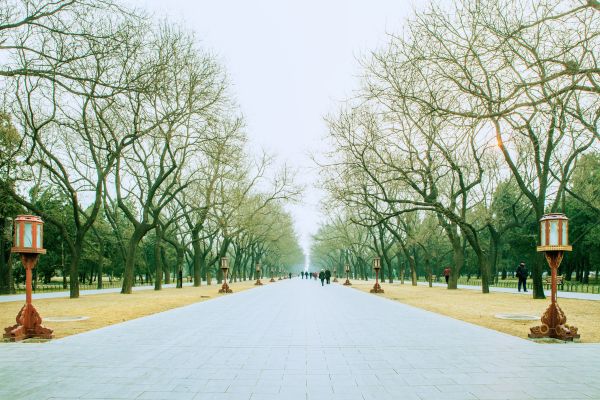
On 12 July 2019, Daegu High Court of South Korea rendered a second-instance judgment (No.: 선 고 2018나23101 집행판결), which recognized and enforced the civil judgment (No.: 2013 Chao Min Chu Zi No. 07474) (2013朝民初字第07474) made by Chaoyang District People’s Court of Beijing. The case is hereinafter referred to as “the Daegu Case”.
We would like to thank Dr. Su Xiaoling(苏晓凌), lawyer at Beijing DHH Law Firm, who posted a write-up about the case on Wechat and shared the valuable information with us.
Up to now, a total of four judgments have been successfully recognized and enforced between China and South Korea. (For the List of China’s Cases on Recognition of Foreign Judgments, please click here.)
1. On 5 Nov. 1999, Seoul District Court of South Korea recognized a judgment rendered by Weifang Intermediate People’s Court of Shandong Province, China.
2. On 25 Mar. 2019, Qingdao Intermediate People’s Court of Shandong Province, China (hereinafter “the Qingdao Court”) recognized a judgment rendered by Suwon District Court of South Korea. (hereinafter referred to as “the Qingdao Case”, see our previous post for details)
3. On 12 July 2019, Daegu High Court of South Korea recognized a judgment rendered by Chaoyang District People’s Court of Beijing (i.e., “the Daegu Case”)
4. On 2 Apr. 2020, Shanghai First Intermediate People’s Court recognized a judgment rendered by South Seoul District Court of South Korea. (hereinafter referred to as “the Shanghai Case”, see our previous post for details)
I. Case overview
The applicant LEE WON JUNE, who habitually resided in Changzhou, China, and the respondent PARK KYUN GEU, who habitually resided in Daegu, South Korea, were both Korean nationals. The applicant entrusted the respondent to sell his house located in Chaoyang District, Beijing, China. After the sale of the house, the respondent failed to return the proceeds of CNY 2.7 million to the applicant.
The applicant filed a lawsuit against the respondent with Chaoyang District People’s Court of Beijing (hereinafter “the Chaoyang Court”), which then made a civil judgment (Judgment No.: 2013 Chao Min Chu Zi No. 07474, hereinafter “the Chinese Judgment”) (2013朝民初字第07474), requesting the respondent to return the proceeds to the applicant and pay the corresponding interest.
The respondent appealed to Beijing Third Intermediate People’s Court, which made a civil judgment (Judgment No.: 2016 Jing 03 Min Zhong No. 12494) (2016京03民终12494号), maintaining the first-instance judgment.
However, the respondent failed to perform the Chinese Judgment, and the applicant applied to Daegu District Court of South Korea for recognition and enforcement of the Chinese Judgment. Daegu District Court rendered a judgment on 21 June 2018.
Thereafter, the respondent appealed to Daegu High Court of South Korea, which rendered a final judgment on 12 July 2019 to recognize and enforce the Chinese Judgment.
II. Case details
Daegu High Court stated its reasons for recognition and enforcement of the Chinese judgment as follows:
1. On 5 Nov. 1999, Seoul District Court of South Korea recognized a judgment rendered by Weifang Intermediate People’s Court of Shandong Province.
2. On 14 June 2016, the Supreme People’s Court (SPC) of China signed a memorandum of understanding with the Supreme Court of South Korea on judicial exchange and cooperation(司法交流与合作谅解备忘录), to ensure that the two sides would mutually recognize and enforce civil and commercial judgments in line with its domestic laws.
3. On 25 Mar. 2019, the Qingdao Court recognized a judgment rendered by Suwon District Court of South Korea (Author’s note: i.e. the Qingdao Case, which marked the first time that China recognized a Korean judgment). Judging from the Qingdao Case, there is no substantial difference between China’s Civil Procedure Law and South Korea’s Civil Procedure Law in terms of recognition and enforcement of judgments. The conditions for Chinese courts to recognize and enforce foreign judgments are not overly strict. Therefore, it can be expected that similar Korean judgments can also be recognized in China.
III. Our comments
1. A “follow-suit” circle
The recognition and enforcement of the Chinese judgment by Daegu High Court is largely encouraged by the Qingdao Case.
Evidently, the Qingdao Case has given Daegu High Court a reasonable expectation that China will continue to recognize Korean judgments in the future, thus promoting Daegu High Court to confirm the reciprocity between China and South Korea, and eventually to recognize the Chinese Judgment in the Daegu Case.
Moreover, as mentioned in our previous post, after China’s first recognition of the Korean judgment, other disputing parties would be encouraged to apply to Chinese courts for recognition of Korean judgments, such as the Shanghai Case.
This signals that after China took the first step in the Qingdao Case, a “follow-suit” circle is formed in practice between China and South Korea. [1]
This pattern is of great reference value, for other jurisdictions wishing to do the same, they may consider launching a testing case like “the Qingdao Case”.
2. Memoranda between courts will contribute to recognition and enforcement of judgments
As mentioned above, Daegu High Court is also encouraged by the memorandum of understanding on judicial exchanges and cooperation between the Supreme Courts of China and South Korea.
The memorandum is not a binding international treaty, and there is no international treaty on the recognition and enforcement of judgments between China and South Korea. However, viewed from the Daegu Case, the court from either side can still establish a reasonable expectation that “both sides will recognize each other’s judgment” according to the goodwill released in the memorandum, so as to recognize the judgment of the other side.
We have not yet found the full text of the said memorandum between China and South Korea. However, we can see, from other judicial exchange and cooperation memoranda signed by the SPC of China with the supreme courts of other countries, the content on recognition and enforcement of judgments. For example, the memorandum of understanding on judicial exchange and cooperation signed between China and Bolivar includes such provisions as promoting negotiation and signing of bilateral judicial assistance treaties on recognition and enforcement of judgments.
We presume that the China-Korea memorandum may be similar to the aforesaid China-Bolivia memorandum. According to the Daegu Case, memoranda between supreme courts can indeed promote the recognition and enforcement of judgments.
In fact, the SPC of China and the Supreme Court of Singapore have signed a memorandum of guidance on the recognition and enforcement of judgments. This is regarded as a typical example of promoting the recognition and enforcement of judgments through memoranda.
We look forward to seeing more such memoranda in the future.
An analysis is also available on Asia Business Law Institute.
[1] See Wenliang Zhang, Sino–Foreign Recognition and Enforcement of Judgments: A Promising “Follow-Suit” Model?, Chinese Journal of International Law, Volume 16, Issue 3, September 2017, Pages 515–545.
Photo by Vicky Yu (https://unsplash.com/@vicky_yu) on Unsplash
Contributors: Guodong Du 杜国栋 , Meng Yu 余萌









